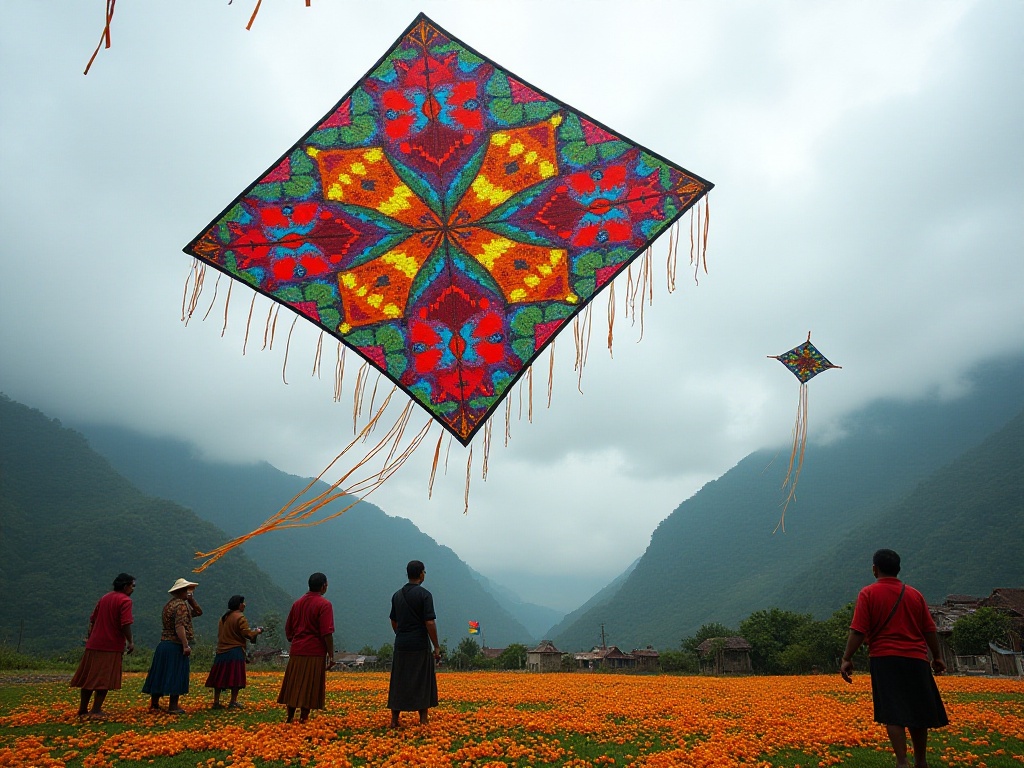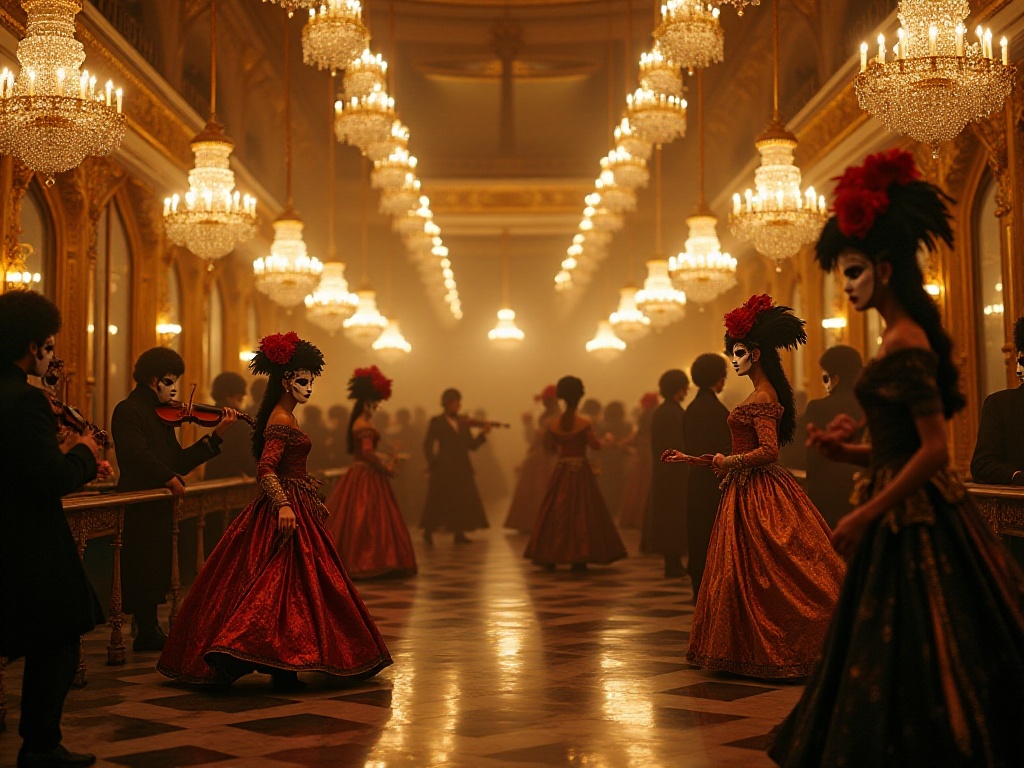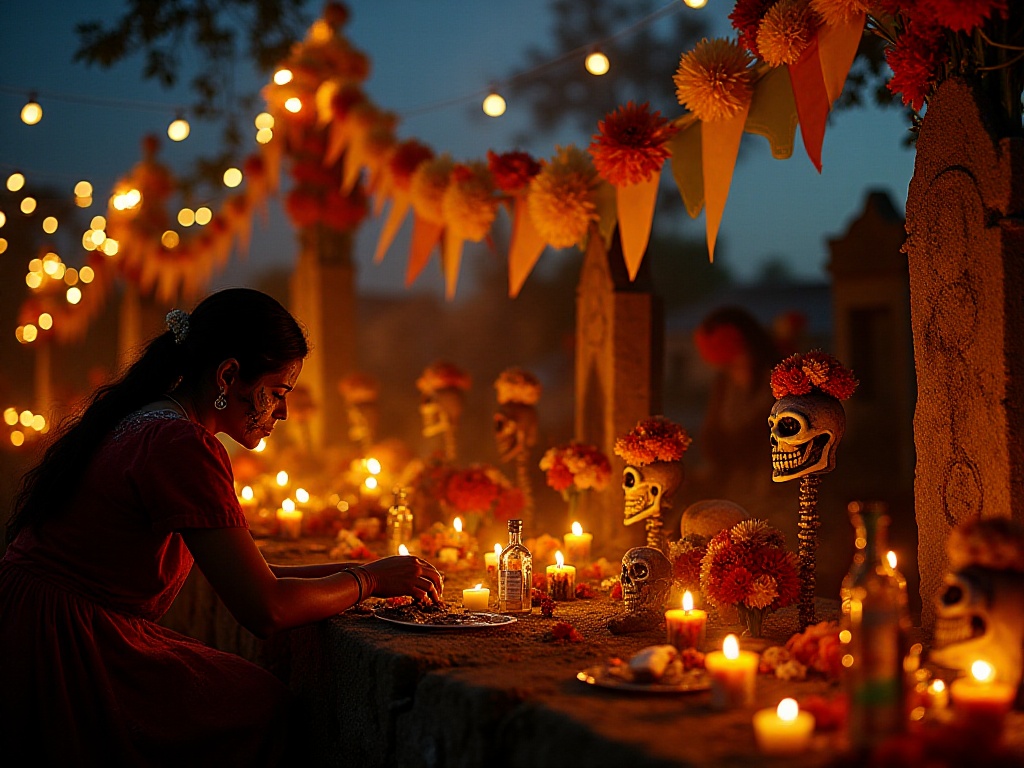Origins
Nestled in the mountains of Bavaria, Germany, lies a small town called Oberammergau. Beyond its stunning Alpine views, it holds a cultural tradition that amazes the world - a Passion Play performed once every decade. As a traveler who has been around the world, I've witnessed many stunning cultural performances, but Oberammergau's production is undoubtedly one of the most unique and moving.
The play's appeal lies not only in its grand scale but also in its nearly 400-year heritage. Each performance is more than just a show - it's a spiritual journey through time. Sitting in the open-air theater, breathing the fresh Alpine air, listening to the live symphony orchestra, and watching thousands of actors passionately portray biblical stories, you experience an indescribable sense of awe.
Historical Origins
In 1633, Europe was going through difficult times. During that turbulent era, the residents of Oberammergau made a solemn vow: if God would protect their town, they would perform the Passion Play every ten years as an expression of gratitude.
This seemingly simple promise has not been forgotten in nearly 400 years. Except for a few special periods, such as during the two World Wars, this tradition has continued to this day. Each generation of Oberammergau residents has viewed this promise as a sacred mission, passing it down through generations without interruption.
Throughout the long course of history, the play's form has continuously evolved. From its initial simple performance to today's large-scale production; from early performances in the church cemetery to today's modern open-air theater seating thousands; from just a few actors initially to now involving the entire town. These changes witness the progress of time, but the play's core spiritual values remain unchanged.

Community Participation
The most remarkable aspect of Oberammergau's Passion Play is its community-wide involvement. This isn't an ordinary commercial performance, but a cultural event involving the entire community. In this town of just over 5,000 residents, almost everyone participates in some way.
To become an actor in the performance, one must meet strict conditions: first, they must be a local resident of Oberammergau, and must have lived in the town for at least 20 years. This requirement ensures not only the actors' deep understanding of local culture but also maintains the play's authenticity and tradition.
The actor selection process is also very rigorous. Multiple people compete for each important role, with final selections made by a professional committee based on acting ability, character, voice, and other factors. Once selected, actors invest considerable time in rehearsals, with some even growing their hair and beards specifically to better portray their characters.
But participation extends far beyond performing on stage. Some residents are responsible for costume design and creation, perfectly recreating ancient Palestinian attire; others focus on prop making, striving for historical accuracy; still others handle logistics to ensure smooth performances. Even the town's carpenters participate, crafting stage sets and props that showcase exquisite craftsmanship.
This model of community-wide participation gives every Oberammergau resident a deep emotional connection to the play. They participate not for money or fame, but view it as a sacred responsibility and honor. It's this heartfelt dedication that makes each performance so sincere and touching.

Professional Production
The Oberammergau Passion Play is perfect in terms of production quality. This five-hour performance completely presents the story from the Last Supper to Jesus's resurrection. On the grand open-air stage, over 2,000 actors perform simultaneously, creating an awe-inspiring spectacle.
The stage design is ingenious. The main stage comprises multiple areas that can flexibly switch between different scenes. The buildings on both sides reference ancient Jerusalem's architectural style, with an open performance area in the middle. This layout not only facilitates actor movement but also allows audiences to clearly see details of every scene.
The costumes and props are equally excellent. Each costume is carefully designed to recreate the look of biblical times. From the elaborate robes of main characters to the daily wear of ensemble actors, every piece of clothing reflects historical authenticity. Prop making is meticulous, from Jesus's cross to the vessels used in the Last Supper, all striving for historical accuracy.
Live music is another highlight. A 55-piece orchestra and 100-person choir perform live, adding stunning musical effects to the entire performance. The music not only creates atmosphere but perfectly integrates with the plot, allowing audiences to more deeply experience the story's emotional fluctuations.
Most amazingly, this large-scale performance takes place entirely outdoors. Whether under scorching sun or gentle rain, the show goes on. While this outdoor setting adds many technical challenges, it creates a unique viewing experience. When the sun sets and twilight illuminates the stage, that perfect fusion of nature and art becomes unforgettable.
Viewing Experience
As someone who experienced the 2010 performance firsthand, I can say this is absolutely a cultural baptism beyond ordinary theater experience. Although the entire performance is in German, the actors' performances are so masterful that language is no barrier. Their every glance and movement is so compelling that audiences become completely immersed in the story's emotions.
The performance is divided into two parts with a three-hour intermission. This arrangement, while seeming unusual, is actually very reasonable. Audiences can use this time to enjoy lunch in town or visit local attractions. This pacing prevents the viewing experience from becoming too tiring and instead creates a complete cultural experience.
The most memorable scene is Jesus carrying the cross. When the lead actor stumbles across the stage, the audience's emotions are completely stirred. Some silently weep, others pray quietly - this collective emotional resonance deeply conveys the play's spiritual power.
The climax is the crucifixion scene. This scene is handled with extreme detail and solemnity, showing historical truth while avoiding excessive gore. When Jesus says "It is finished," the entire theater falls into solemn silence, creating an impact that every audience member will remember for life.

Travel Tips
If you want to watch the 2030 performance, now is the best time to start planning. Ticket bookings usually begin two years before the performance, with prices ranging from 30 to 180 euros. Different price seats offer varying views and comfort levels, but even the cheapest seats provide a complete view of the performance.
When booking tickets, note several points: First, choose months with better weather, such as June to August; second, consider weekday performances as tickets are relatively cheaper; finally, try to choose seats near center stage for better views of actors' facial expressions.
Beyond watching the performance, Oberammergau has many places worth exploring. The town is famous for its woodcarving crafts, with shops along the streets displaying exquisite wooden artworks. Most buildings maintain traditional Bavarian style, with painted murals on exterior walls telling various biblical stories and folk tales.
The local Lüftlmalerei fresco art is also distinctive. These unique mural decorations can be seen on many building exteriors in town, each painting like an exquisite story. The Rococo-style interior decoration of the parish church is also worth seeing, with magnificent ceiling paintings and altars displaying high artistic standards.
The natural scenery around town is equally enchanting. The majestic Alps views, fresh mountain air, and bubbling streams make this a perfect holiday destination. Consider renting a bicycle to explore the mountain paths slowly and experience Bavaria's natural beauty.

Deep Reflection
In this rapidly changing era, Oberammergau's Passion Play brings us profound inspiration. That a small town can persist for 400 years, passing down the same promise through generations, is itself a miracle. This persistence isn't simple repetition but a devoted pursuit of spiritual values.
Here, we see a unique community cohesion. The sight of an entire town united in working toward one goal is particularly precious in today's society. This collective spirit not only preserves traditional culture but also creates a unique sense of community identity.
More worth considering is how the play maintains tradition while keeping pace with the times. Although the core story remains unchanged, each edition's director incorporates new reflections on contemporary social issues. This balance between tradition and innovation keeps this ancient play full of vital energy.

Future Outlook
Looking forward to the 2030 performance, we can expect to see more innovative elements. The 2022 performance incorporated many modern elements, such as responses to social justice and peace issues. These changes demonstrate the wisdom of Oberammergau residents in keeping pace with the times.
Technological development also brings new possibilities for future performances. While maintaining traditional performance forms is important, improvements in lighting and sound technology can bring better viewing experiences to audiences. Meanwhile, digital technology applications might provide new ways of watching for those unable to attend in person.
However it changes, the play's core values will never change. It's not just a performance, but a community's spiritual bond, a living fossil of culture, and an opportunity to contemplate life's meaning.
The 2030 performances will run from May to October, with shows every Tuesday, Thursday, Friday, Saturday, and Sunday. If you're interested in this unique cultural experience, it's recommended to start planning early. After all, this could be a life-changing cultural pilgrimage. Perhaps we'll have the chance to meet in this Bavarian town and witness together this soul-stirring performance.


